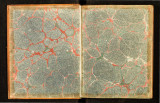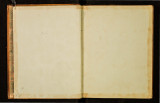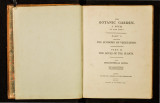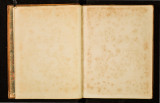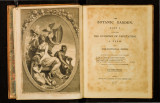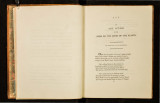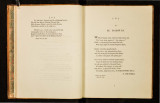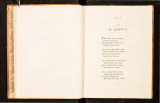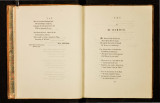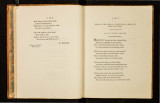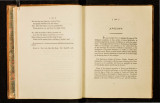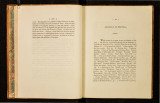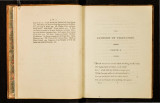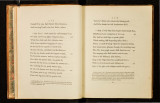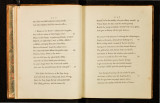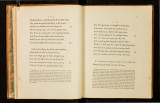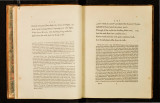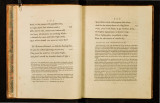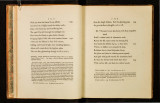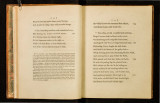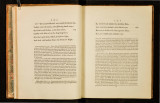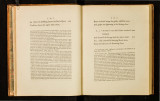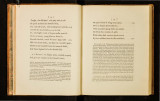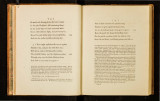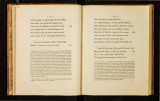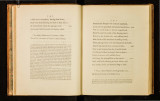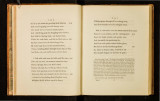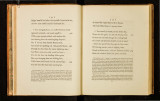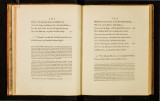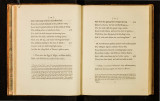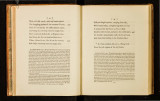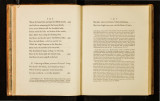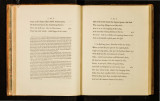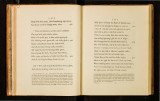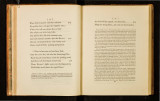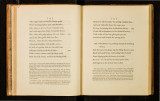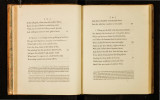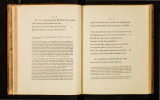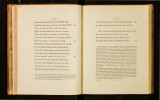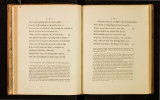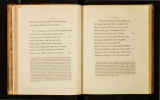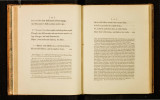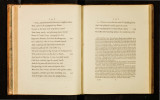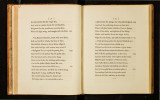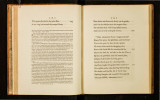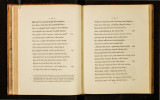| OCR Text |
Show iRON. NoTE xvur. 36 . . . d 1. 't' s the clay is wafhed away down into the valleys, clutriatwn . m !ituattons on ec IVI Ie . . d h n{ . {lie part or coal left behind ; this circumfiance IS feen m many valleys near :~e ~e~spof or~~ers, which are covered recently by a whitifh impure clay, called water· cla . See note XIX. XX. and XXIII. . . y h f "fhe·l another curious obfervatwn on moraffes 111 the Lord CROMARTIE as urm u · b c d t In a mofs near the town of Eglin in Murray, though there I!! Paper a ove reterrc o. fi f d 1 · ·h· h communicates with the roofs, yet for three or four eet o ept 1 no nver or water ~ tc . . . . . • r h l"ttle fhell-fi{h refembling oy!lers wtth ltvtng fifh tn them m great 1n the mots t ere are I . . · h h h r tch fifh are found in the adJaCent nvcrs, nor even 10 t e water quantlttes, t oug no l . . f a . · h r btit OI1ly in the folid fubflance of the mofs. T!11S curwus a not ptts m t e mots, d · h 1 I c the fhells fometimes found on the furface of coals, an m t e c ay-on y accounts tor . . . · above them, but alfo for a thin firatum of {hells wh!Ch fometHnes extfls over lron-ore . N 0 T E XVIII.------1 R 0 N. Cold waves, £mmerged, the glow£7ig majs congeal, And turn to adamant the hiJ!ing Steel. CANTO II. 1. I9I' .. AS iron is formed near the furface of the earth, it becomes expofed to fl:rea~s of .water and of air more than mofl other metallic bodies, and thence becomes combmed with oxygene, or vital air, and appears very frequently in its calciform fl:ate, as in variety of ochres. Manganefe, and zinc, and fometimes lead, are alfo fou11d ne:ar the furface of the earth, and on that account become combined with vital air, and are ex- . hibited in their calciform flate. The avidity with which iron unites with oxygene, or vital air, in_ which p:ocefs :much heat is given out from the combining materials, is {hewn l>y a cunous cxpen.ment .0 f M. Iegenhouz. A fine iron wire twifl:ed fpirally is fixed to _a cork, on the p~Hnt of the fpire is fixed a match m:~de of agaric dipped in folution of mtre ; the m~tch ~s then ignited, and the wire with the cork put immediately into a bottle full of VItal a1r, the match firlt burns vividly, and the iron foon takes fire and con fumes with brilliant fparks till it is reduced to fma\1 brittle glo~ules , gaimng an addition of about one third of its weight by its union with vital air. Annales de Chymie. Traite de Chymie, par Lavoifier, c. iii. NoTE XVIII. IRON. J7 ST!EL. It is probably owing to a total deprivation of vital air which it holds with fo gr f ·c~· h . . ea avt tty, t at tron on betng kept many hours or days in ignited charcoal becomes con-verted ~nto fieel, and thence acquires the fac~lty of being welded when red hot long before tt. melts, and alfo the power of becommg hard when immerfed in cold water 1 both whtch I fuppofe depend on the fame caufe, that is, on its being a worfe condutl:or of he~t than other metals; an~ ~ence the furfac'e both acqu ires heat much fooner, and lofes tt much ~ooner, than the mternal parts of it, in this circumfiance refemblmg glafs. Wh_en. fieelts made very hot, and fuddenly immerged in very cqJd water, and moved about In It, the furface of the fl:eel becomes cooled firfi, and thus producing a kind of (;:afe or a~ch over t~e internal part, prevents that in ternal part from contraCting quite fo much as tt otherwtfe would do, whence it becomes brittler and harder, like the glafsdrops called Prince Rupert's drops, which are made by dropping melted glafs into cold ~ater. This idea is co_unt~nanccd by the circumfiance that hardened fieel is fpecifically ltghter tha~ fl:ec:J whtch IS more gradually cooled. (Nicholfon's Chcmifiry, p. 31 3) Why the bnttlencfs and hardnefs of Heel or glafs fhould keep pace or be companions to each other may be difficult to conceive. When a fl:eel fpring is forcibly bent till it break, it requires lefs power to bend it through the firll: inch than the fccond, and lcfs through the fecond than the third; the fame I fuppofe to happen if a wire be difiended till it break by hanging weights to it;. this fhews that the particles may be forced from each other to a fma\1 diflance by Iefs power, than is neceffary to make them recede to a greater dill:ance; in this circumfiance perhaps the attraCtion of cohefi.on differs from that of gravitation, which exerts its power inverfely as the fquares of the dill:ance. Hence it appears that if the innermofl particles of a fieel bar, by cooling the extern:-tl furface firJ:, are kept from approaching each other fa nearly as they otherwife would do, that they become in the fituation of the particles· on the convex fide of a bent fpring, and cannot be forced farther from each other except by a greater power than would have been necetT:1ry to have made them recede thus far . And fecondly, that if they be forced a little farther from each other they feparate; this may be exemplified by laying two mugnctic needles parallel to each other, the wntrary poles together, then drawing them longitudinally from each other, they willllide with fmall force till they begin to feparate, and will then require a Hronger force to really feparate them. Hence it appears, that hardnefs and brittlenefs depend on the f:~me circumflance, that the particles are removed to a greater dirlance from each other :md thus refi.fl any power mo~;.e forcibly which is applied to difplace them farther, this conllitutes hardncfs. And fecondly, if they arc difplaced by fuch applied force they immediately feparate, and this conllitutes brittlcnefs. Steel may be thus rendered too brittle for many purpofes, on which account artifis have means of foftening it again, by expofing it to certain degrees of heat, for the confiruetion of different kinds of tools, which is called tempering it. Some artill:s plunge large tools in very cold water as foonas they are completely igniteu, a.nd moving them about,. |



